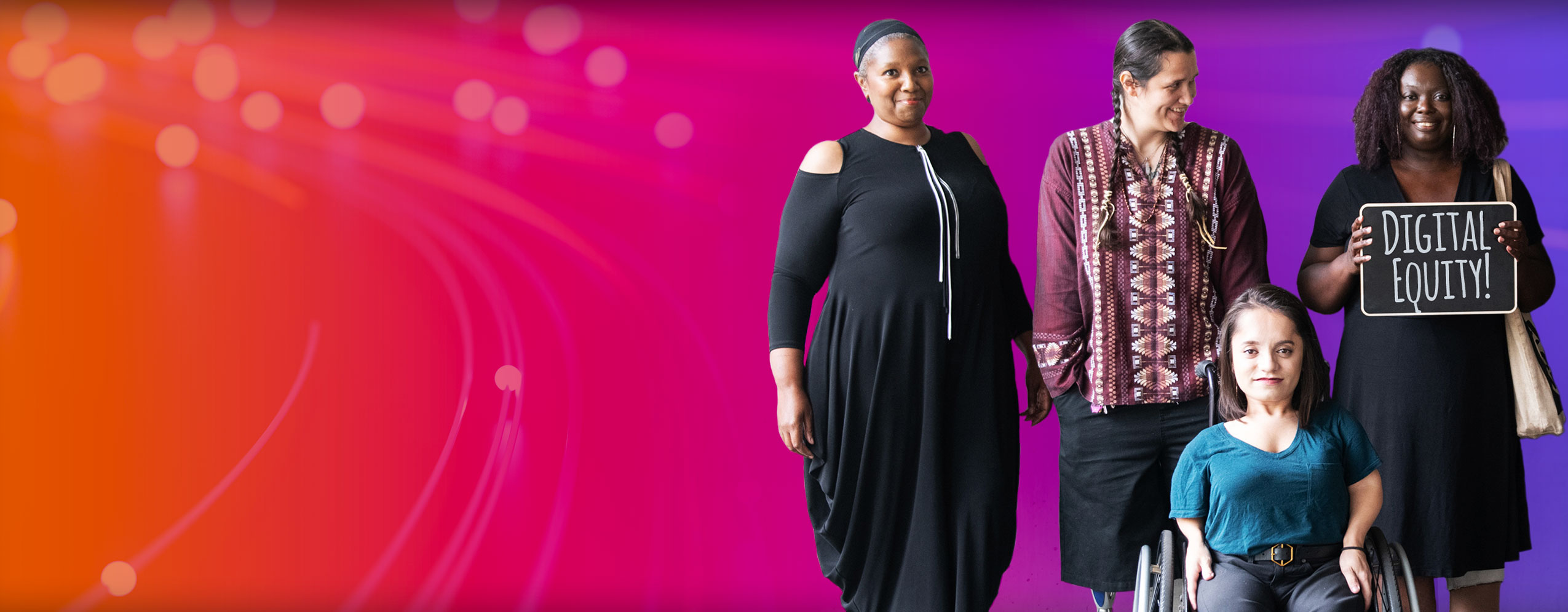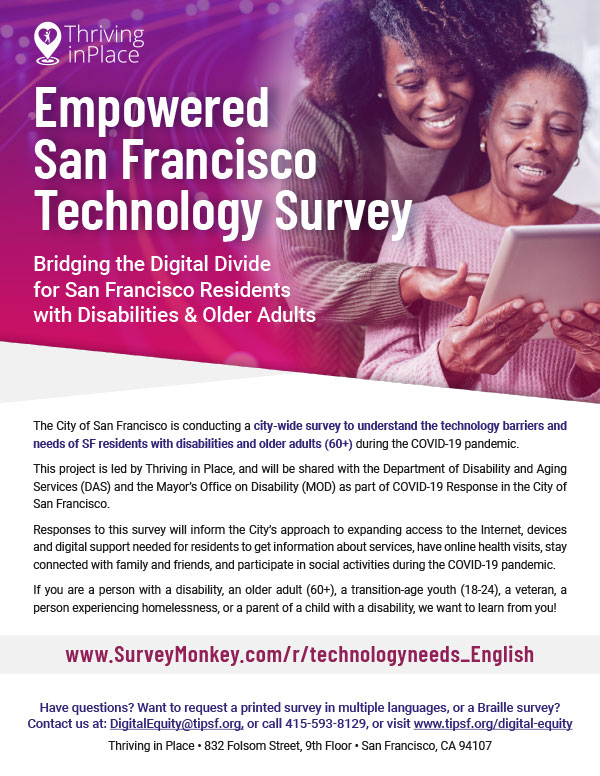The COVID-19 pandemic has made it more important than ever to ensure that all residents have access to the internet. The pandemic showed us that the internet is no longer a luxury — but rather is a vital tool for residents to access information, services, and to participate equitably in today's digitally connected society. Despite being widely recognized as a leader in the technology sector, San Francisco has historically lagged behind in providing equal access to technology resources and services for its residents.
For many people with disabilities, older adults and multiply-marginalized communities, the pandemic has intensified these already-existing gaps, and has made it acutely difficult to access information, services, and connections online. This reveals a troubling public health and social justice issue that can no longer be ignored. There is a clear unified call from disability and aging advocates to establish the "internet as a utility," which provides an important opportunity to think of the internet as public infrastructure rather than a luxury or commodity.
"It shouldn't take a global pandemic to make our culture more accessible to disabled folx. But now that we've seen how beneficial remote, virtual, and accessible options for school, work, healthcare, and social events have been to our communities, let's ensure they continue. And we need to continue to expand access to technology which makes remote options possible to BIPOC, low-income, and other multiply marginalized disabled people."
(Sininvalid @sinsinvalid, social media post excerpt, October 2021)1
To respond to this critical issue, Thriving in Place (TIP) conducted a city-wide survey to understand the technology barriers and needs of San Francisco residents with disabilities and older adults (ages 60+) during the COVID-19 pandemic.
Results of this survey will be shared with the Department of Disability and Aging Services (DAS) and the Mayor's Office on Disability (MOD) to help inform the City's strategy for bridging the digital divide and increasing the accessibility of digital programs and services.
Through the help of over 60 community-based organization partners, we administered a citywide survey to over 3,080 stakeholders, conducted 40 in-depth interviews and 9 focus groups.
The Survey Focused on 7 Key Areas:
-
Access to Internet, devices, and assistive or adaptive technology (AT)
-
Access to services during the COVID-19 pandemic
-
Technology barriers, challenges and opportunities
-
Familiarity using internet and devices (digital literacy)
-
Use of technology for social engagement
-
Access and barriers to health information and services during the COVID-19 pandemic (telehealth)
-
Recommendations for improving access to technology
The survey also included 11 demographic questions to ensure that the City was reaching a representative sample of San Francisco residents.
To ensure language access, the survey was provided in six languages (English, Spanish, Chinese, Russian, Tagalog and Vietnamese) and in multiple accessible formats (large-print, Braille, and phone-based).
Community Advisory Coalition and Community Partners:
In the spirit of "Nothing About Us, Without Us" this needs assessment was guided by a 14-member Community Advisory Coalition composed of a diverse group of Deaf and Disabled community members, non-profit disability and aging cultural workers, veteran and unhoused community advocates, and transition-age youth.
Meet the Community Coalition & Partners


